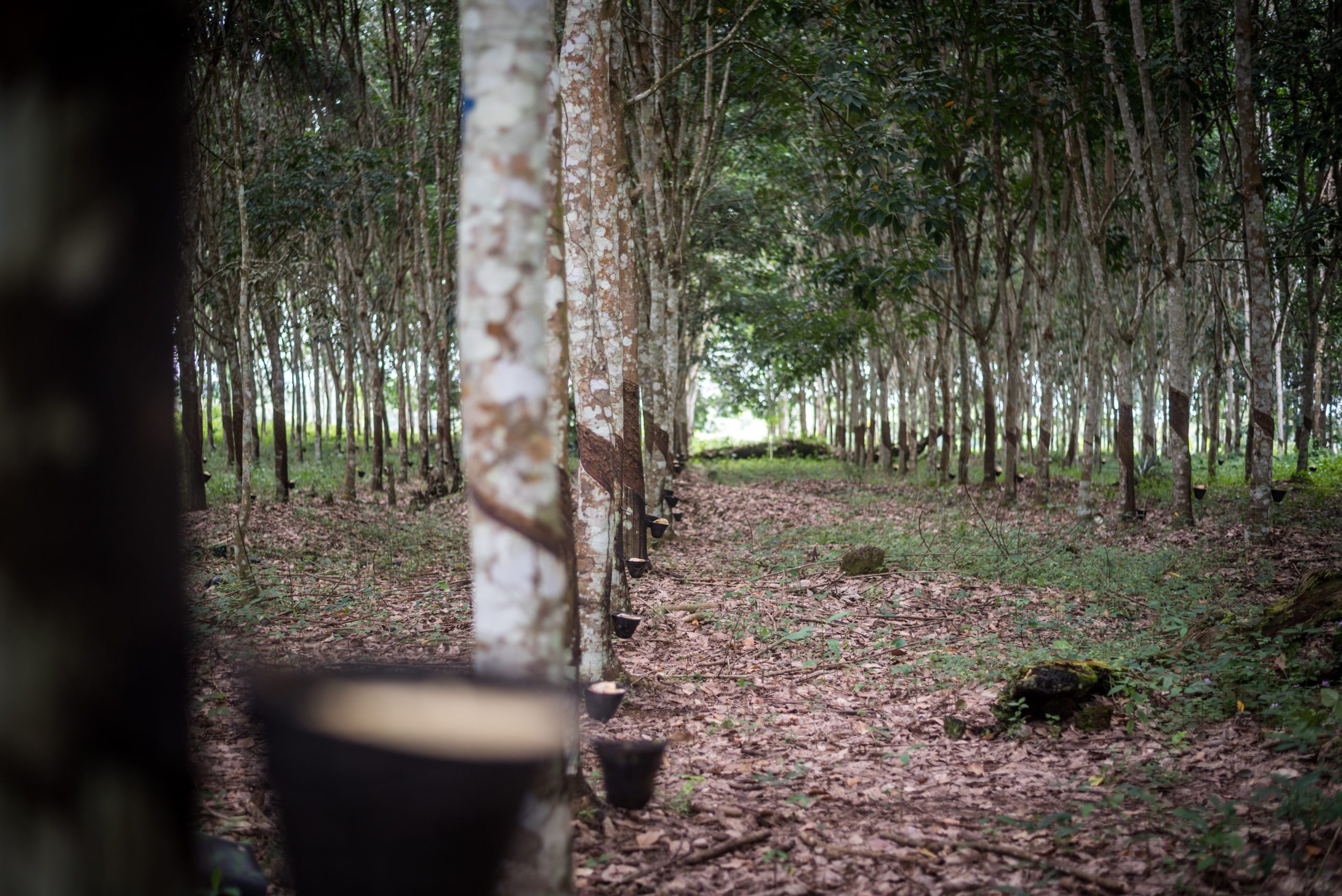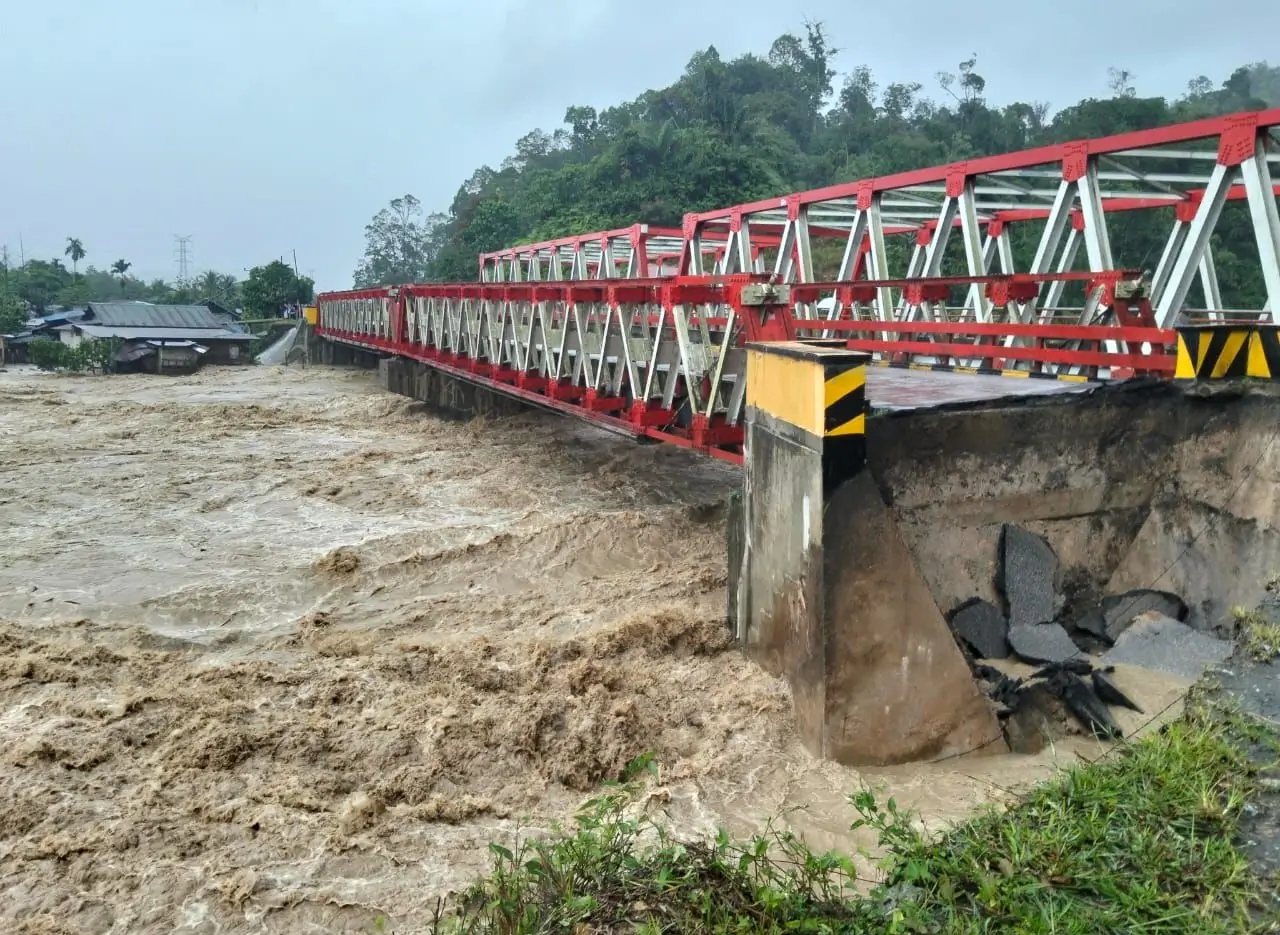
The Unfashionable Truth About Unsustainable Latex Rubber
By Phelim Kine
Might latex rubber become a fashion industry go-to alternative to animal leather and plastics?
Perhaps.
But does latex rubber merit a leading design magazine’s praise as a “noble and natural material that does not kill animals, does not cut down trees” and that represents “a sustainable alternative to animal and petroleum-based materials”?
Absolutely not.
The fact is that the natural rubber industry is marred by widespread environmental and labor rights abuses that fashion designers and textile producers should be extremely wary of.
The proportion of the global natural latex rubber supply consumed by the global fashion and textile industry is dwarfed by the more than 70 percent of the total consumed by the global tire industry. But an ongoing surge in popularity of rubber in the fashion and textile industries will likely increase the proportion of natural rubber consumed by that sector. Fashion designers and textile firms should understand the grim toll that the latex rubber they consume could inflict on the environment and communities – primarily Southeast Asia and West Africa – from where the vast majority of natural rubber is sourced and processed.
Natural rubber production has been a driver of tropical deforestation, which is a major accelerant of climate change. Land area under cultivation for the Hevea brasiliensis rubber tree nearly doubled from 2000 to 2018 to an area equivalent to the size of Germany, constituting a drastic erasure of tropical rainforest in producer countries.
The statistics documenting this destruction are stark. As of 2019, a total of six countries – Thailand, Indonesia, Malaysia, Vietnam, India and China – are the source of 95% of global production. African forests and their biodiversity have also suffered due to rubber production and expansion in countries including Ivory Coast, Cameroon and Liberia. In recent decades, rapid expansion of rubber monocropping has decimated Southeast Asia’s precious rainforest. In some countries in the Mekong region of Asia, deforestation for rubber accelerated faster than anywhere else on the planet.
Driven by a boom in commodity prices in the mid-2000s, and aided by regional governments willing to grant large land concessions to agro-industrial investors, rubber planting has spread massively in the Greater Mekong region. In Cambodia, the area under rubber cultivation has leapt nearly nine-fold from 44,000 hectares in 2003 to 384,350 hectares in 2016. Analysis of deforestation data in Cambodia indicates that 2.2 million hectares – 24% of Cambodia’s primary forest cover – were destroyed between 2001 and 2015, with almost 25% of that former rainforest cleared for rubber plantations.
Monoculture rubber plantations also decimate biodiversity, threatening the habitats of endangered wildlife such as tigers, gibbons, orangutans and Asian elephants. Analysis of the impacts of the conversion of tropical rainforest to rubber monoculture plantations indicates that populations of animal species key to pollination such as birds and bats as well as agricultural pest-devouring carabid beetles plunge by up to 76% on forest converted to rubber plantations. Researchers at the University of East Anglia in the United Kingdom have warned that the unrestrained growth in natural rubber plantations at the expense of tropical rainforests “could substantially exacerbate the extinction crisis in Southeast Asia.”
Air and water pollution are also serious byproducts of natural rubber production. A Mighty Earth investigation into the environmental impact on local communities of the Hévécam rubber plantation in southern Cameroon revealed an array of human impacts caused by pollution from the rubber plantation and processing plant. They included the poisoning of local surface water sources, pesticide run-off and latex spills that have caused a toxic mixture of chemicals to enter local waterways. Community members around the rubber plantation blame this pollution for numerous instances of water-related illnesses and disease, including stomach aches, diarrhea, and even several deaths.
The natural rubber industry has also become synonymous with abuses of the rights of local and Indigenous communities in areas where forests are converted to monoculture rubber plantation. Those abuses include illegal land grabbing and labor rights violations including the alleged
unlawful use of child labor in rubber production in Indonesia and Liberia. One of the biggest challenges to sustainable natural rubber production by smallholder farmers is the low prices paid to them for their rubber and latex. Low rubber prices obviate incentives for smallholder farmers or even larger multinational corporations, to invest in new systems, technologies and practices that can improve the sustainability of rubber cultivation and reduce its environmental footprint and harms.
The solution to these evils is the development of sustainable rubber productions supply chain that respects the environment as well as the rights and health of workers and local communities. In March 2019, a number of companies representing rubber producers, processors, global tire makers, and auto manufacturers founded a joint platform along with a group of nongovernmental civil society organizations, including Mighty Earth, with the goal of making the rubber industry fully sustainable. The new body, the Global Platform for Sustainable Natural Rubber (GPSNR), has since worked collaboratively to devise concrete environmental and human rights measures to transform the industry toward a more sustainable rubber production model, Many GPSNR members support agroforestry as a solution to the problems in the industry, a farming technique that enables forests to remain biodiverse, protecting natural habitats and providing alternative sources of income for farmers. This includes analysis and redevelopment of existing production systems in order to increase transparency, traceability and accountability throughout natural rubber supply chains. The GPSNR is also developing company policy guidance for sustainable rubber procurement as well as improved capacity building for both large and small-scale growers.
The GPSNR offers hope that in future the natural rubber industry can purge itself of its links to deforestation, climate change, biodiversity loss, land grabs and toxic pollution. The fashion industry should support these efforts, including by garment and footwear companies adopting their own commitments to only buy natural rubber and latex from sustainable sources. Without such concrete steps, conscientious fashion designers should be under no illusion about mostly specious claims of latex rubber’s nobility and sustainability.
Phelim Kine is the senior director Asia at the Washington, D.C.- based environmental campaign organization Mighty Earth and former deputy director of Human Rights Watch’s Asia division.


